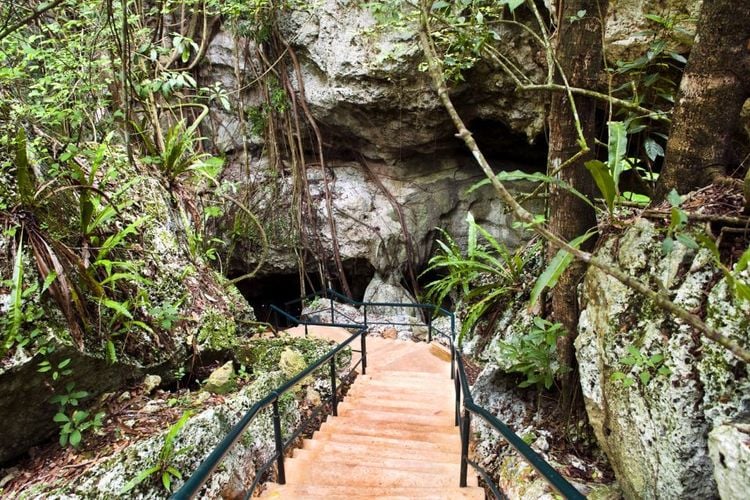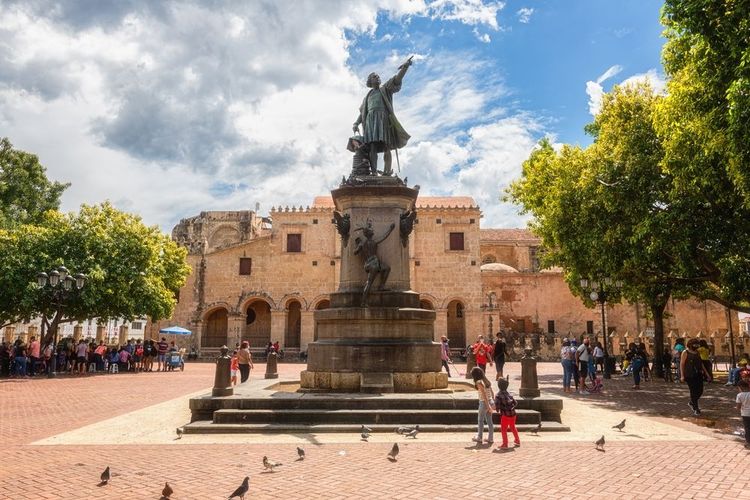The cradle of the New World
Statue of Christopher Columbus and basilica of Santa Maria la Menor in the colonial zone of Santo Domingo.
- © Nick N A / Shutterstock
The capital of the Dominican Republic, Santo Domingo is the largest city in the Caribbean and the Antilles. This metropolis of over 3.6 million inhabitants is home to the colonial zone, the cradle of the New World, and a well-preserved historic quarter with numerous monuments, all listed as UNESCO World Heritage Sites. A real delight for anyone wanting to immerse themselves in the country's history.
The colonial zone is home to Santo Domingo's main points of interest and is easy to explore on foot. Forget the car or taxi and discover all its treasures by strolling through the streets, shopping or enjoying a coffee in a shady square... unless you prefer the chu chu colonial, a small tourist train that takes you on a 45-minute tour of the main points of interest in the colonial quarter.
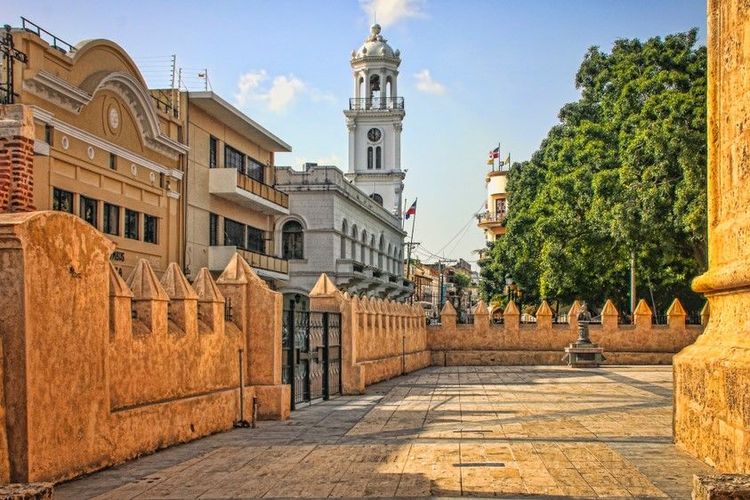
Santo Domingo's historic center.
- © Daniel Andis / ShutterstockBut there's much more to Santo Domingo, as the Dominicans call it, than this historic treasure. Take a stroll along the malecon, admire the impressive monument to Columbus at the entrance to the city, and swim in the turquoise Caribbean waters! The city is teeming with bars, restaurants and places to party to the sounds of bachata and merengue...
Although Santo Domingo is by the sea, there isn't really a beach for swimming. The small black sand public beach near the Anto Montesino monument is not recommended for swimming. You'll have to go to Boca Chica, a 30-minute drive away, but it's well worth it - the lagoon is paradise!

Santo Domingo's malecon.
- © Wirestock Creators / ShutterstockA stay in Santo Domingo also means shopping on Calle de Conde, bargain hunting at the Mercado Modelo, getting lost in the narrow streets with their colourful facades and balconies overflowing with bougainvillea, visiting the city's many museums, churches and convents, taking a trip to the Chinese quarter on Avenida Duarte, visiting the colonial area in a horse-drawn carriage or on the Chu Chu Colonial, the local little train.
Avoid the overpriced restaurants for tourists on Calle de Conde, and lose yourself in the surrounding alleyways, where you'll find small, unpretentious restaurants frequented by locals. The food is very good and hearty, and the prices are ridiculously low (€3, including beer!).
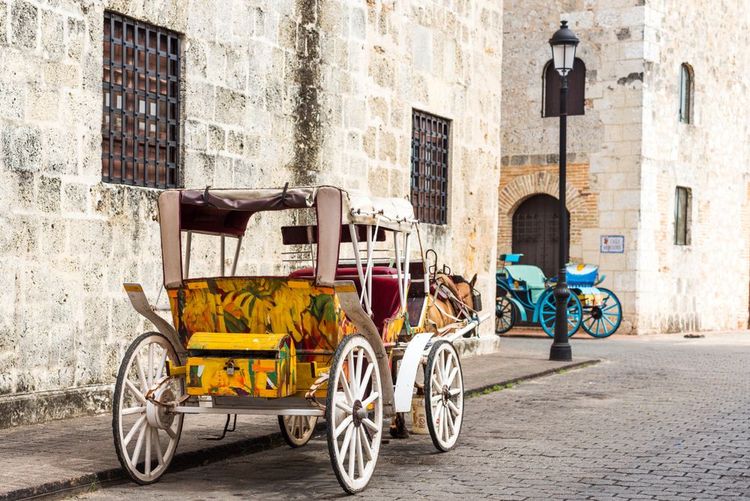
The backstreets of Santo Domingo.
- © gg-foto / ShutterstockInaugurated in June 2018, the cable car offers a five-kilometre journey that passes twice over the River Ozama, providing a superb panorama. Near Santo Domingo, be sure to visit Boca de Nigua, the ruins of an old sugar mill that witnessed the first slave revolt in 1796, led by Toussaint Louverture. Further afield, 48km from Santo Domingo (about an hour's drive) towards Barahona, you can descend the slopes of the impressive Bani dunes, reminiscent of the Pyla Dune.
Last articles
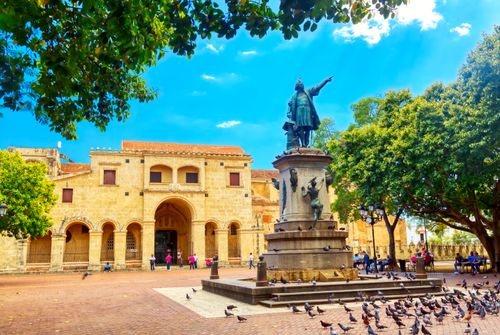
6 emblematic sites in the colonial centre of Santo Domingo

Santo Domingo and the south of the Dominican Republic in 7 days
The must-sees
How to get there?
Santo Domingo's Las Américas international airport is located on a small peninsula 27 km east of the colonial zone. Allow half an hour for transfers, as most hotels have their own shuttle service. This airport is served by direct flights from France operated by Air France and Air Caraïbes.
✈️ Fly to Santo Domingo
Compare prices for flights to Santo DomingoWhere to stay?
The colonial zone of Santo Domingo is home to many charming accommodations. In the rest of the city, there are numerous hotels from the major international chains, ranging from 3* to palaces. To find an all-inclusive club, you don't need to go far: head for Boca Chica, Santo Domingo's seaside resort, a 30-minute drive away. No giant resorts like in Punta Cana, but friendly clubs on a human scale.
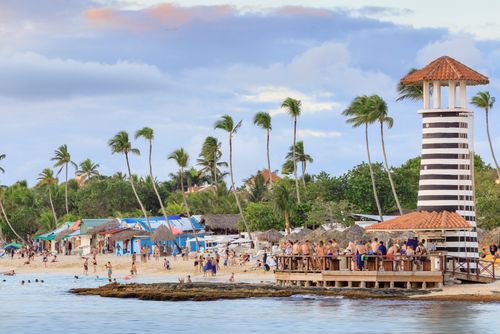
Practical information
Documents and visa
To travel to Punta Cana, and more generally to the Dominican Republic, French nationals must present a valid passport.
When should you go?
The dry season, from November to April, corresponds to the high season: there are more people and prices are higher. During the wet season, from May to October, heavy rains are frequent, but they are brief and generally at the end of the day, so they are not really a problem. The cyclone season runs from June to November. In the low season, from mid-April to mid-December, you can take advantage of low hotel rates. Air fares are also lower and there are fewer tourists on the beaches.
Language
Spanish is the official language of the Dominican Republic, but in Punta Cana you'll have no trouble finding people who speak English and French.
Currency
The currency is the Dominican peso (RDS). ATMs can be found in the reception areas of major hotels. Most of the time, you can pay in US dollars, and sometimes in euros in European hotel chains. Credit and debit cards are generally accepted.
Taxes and tips
Please note that prices in restaurants, bars and hotels do not include VAT. You will need to add 16% tax to which it is a good idea to add a 5-10% tip.
Electricity
The destination is supplied with 110 volts (American standard), so you will need an adapter and a voltage converter to use French electrical appliances. However, most hotels will be able to lend you one.
Health
No vaccinations are required, but a D-T-Polio update is recommended, as is anti-malarial treatment. Always drink bottled water and avoid raw vegetables and milk. Beware of the temperature shock between 30°C outside and 15°C in air-conditioned rooms, bars and restaurants.
COVID info
The good news about Covid-19 is that you don't have to do a thing! Since 23 April 2022, travellers no longer need to present a COVID-19 vaccination card or a PCR or antigenic test to enter the Dominican Republic. Instead, you will need to fill in a form generating a QR code for entering and leaving the Dominican Republic: https: //eticket.migracion.gob.do/
Security
Beware: possession of drugs is severely punished in the Dominican Republic. On its travel advice website, the Ministry of Foreign Affairs strongly recommends that travellers check the contents of their luggage before checking in at the airport on departure from the Dominican Republic. Prohibited substances may be placed in their luggage without their knowledge, particularly if it has been left unattended.
The locals have understood that tourism can bring them a lot, and crime rarely affects holidaymakers. As everywhere else, however, be vigilant and keep an eye on your belongings.
The unmissable speciality?
Rich and spicy, Dominican cuisine is the product of Creole, European and African influences. Starchy foods (rice, sweet potatoes, plantains), fish and shellfish, and tropical fruits are the staples. Grouper is often cooked with coconut milk or a green sauce (coriander, parsley, garlic and olive oil). You're also sure to try lobster. The typical dish, bandera, consists of white rice, broad beans, red beans and stewed meat, accompanied by salad and fried plantains.
What to drink
Rum remains the most popular spirit, served neat (the oldest) or in cocktails. Three brands share the market: Brugal (the best known), Barcelo (the most popular) and Bermudez (rarer). There are two brands of beer in the Dominican Republic: Brahma and Présidente (the best!). And don't forget to try Mamajuana, the local rum concoction made from rum, honey and wine!
What to bring back
In the colonial zone of Santo Domingo, the Calle de Conde is full of souvenirs of all kinds, the most original being the old number plates on the ground! More generally, visitors to the Dominican Republic bring back jewellery made from amber (a solidified brown resin) or larimar (a bluish stone endemic to the island), leather goods, merengue and bachata CDs, liquid vanilla, jam, Brugal rum, Mamajuana and coffee. You can also find them on the beaches and in the local markets. And don't forget that the Dominican Republic is the world's leading producer and exporter of cigars!
Be aware that you are not allowed to eat lobster from 1 March to 3 June in the Dominican Republic, as this is the period when they reproduce. If you eat lobster during this period, you'll be eating frozen lobster! That said, between you and me, avoid the $45 lobster menus in hotels.
explore Try out our comparators
It is Easy to travel





